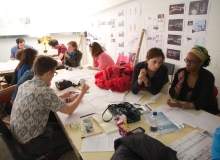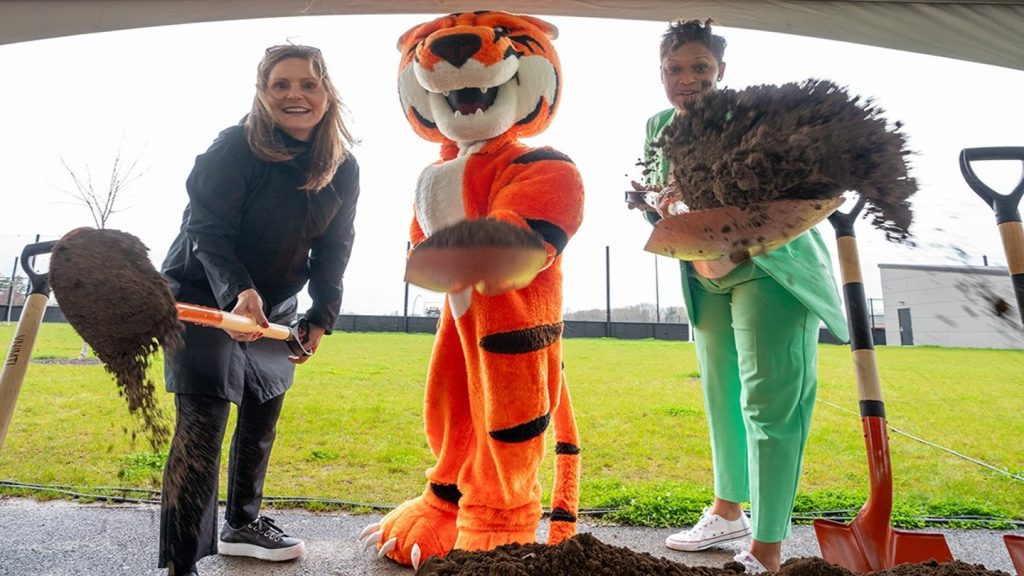

"Design like you give a damn." The unofficial motto of humanitarian design charity Architecture for Humanity (AFH) rests at the heart of an organisation that for 15 years has leveraged the skills of its dedicated staff and legions of volunteers to run community-driven projects all over the world. The group has also responded to some of the world’s most devastating natural disasters, including 2010’s 7.0-magnitude earthquake in Haiti and the tsunami that ravaged Japan’s Pacific coast the following year.
The successes of AFH, which was headquartered in San Francisco but at its peak sat at the centre of a 60-strong international network of local chapters, have been many, but in January 2015 it seemed as if, all of a sudden, this noble endeavour had ground to an unexpected and unceremonious halt. On New Year’s Day, effective immediately, AFH’s San Francisco headquarters closed down, laying off all paid staff and announcing its intention to file for Chapter 7 bankruptcy.
"I attended the annual chapter conference forum the year before," says Beth Worth, a member of the trustee board for AFH’s London chapter. "This was when [co-founder] Cameron Sinclair was leaving. There was a certain feeling that all was not 100%. But those were just little vibes. The way it happened was rather a shock. It happened very fast. I was struggling with one of our projects, which went down, and then a week later this happened. It was just a surreal moment."
Even Garrett Jacobs, AFH’s former co-director of projects who had worked at the San Francisco headquarters, was taken unawares. He describes the declaration of bankruptcy as a "surprise", saying he knew the organisation had issues, "just not the full extent".
See Also:
Fifteen years of AFH
AFH was founded by journalist Kate Stohr and architect Cameron Sinclair in 1999 to respond to the housing needs of refugees returning to Kosovo after the horrifying conflict that took place there in the late 1990s. Since then, the charity has run hundreds of small-scale community projects, overseen a clutch of major design and construction initiatives for neighbourhoods in need and made a significant contribution to many of the most important disaster relief operations of recent years.
How well do you really know your competitors?
Access the most comprehensive Company Profiles on the market, powered by GlobalData. Save hours of research. Gain competitive edge.

Thank you!
Your download email will arrive shortly
Not ready to buy yet? Download a free sample
We are confident about the unique quality of our Company Profiles. However, we want you to make the most beneficial decision for your business, so we offer a free sample that you can download by submitting the below form
By GlobalDataA year-in-review summary published by AFH at the end of 2013 reveals numbers that speak for themselves. More than 2.8 million people in dozens of countries have benefited from facilities that AFH helped build. Nearly half a million children have access to education or sport through the charity’s school building programmes and sports for social change initiatives.
With careful planning and intuitive design it may be possible to alter human behaviour.
In 2008, AFH was presented with the National Design Award by the Cooper-Hewitt National Design Museum, which celebrated the organisation’s "commitment to bringing sustainable architecture to global communities in need". Another award, the 2006 TED Prize – which gave Sinclair "one wish to change the world" – allowed AFH to develop the Open Architecture Network, a unique open source online community for sharing ideas related to sustainable and humanitarian design.
AFH’s bankruptcy: what went wrong?
With a laundry list of successful projects, international renown and a network bursting at the seams with talented volunteers, AFH hardly seemed a likely candidate for unexpected bankruptcy and closure. What chain of events turned this remarkable organisation upside-down with so little warning to the outside world?
In the months since AFH announced its closure, it has gradually become clear that there is no convenient scapegoat for the organisation closing its doors, no secret expense accounts or fatal operational flaws to blame. In fact, the explanation is a far more mundane cause of charity closures – broadly speaking, funding simply dried up.
"The travesty isn’t that the organization went over budget serving communities around the world," Margie O’Driscoll, former executive director of the San Francisco chapter of the American Institute of Architects and new AFH staff member, told the San Francisco Chronicle. "It is that humanitarian design isn’t considered a fundamental right. And that today, in San Francisco, it is easier to find funding for an app than to fund an organization which transforms lives in places most Americans don’t know exist."
Worth notes that the nature of the charity’s funding mechanism and its ties to major international crises left a revenue vacuum when it came to quotidian costs. "Often the problem was that funds were restricted to projects," she says. "So if there’s an earthquake in Haiti or a tsunami, people donate to that particular fund. It was very difficult to get funds to cover overhead and staffing costs and rent and all that stuff. So the bank account looked healthy, but they couldn’t use the money to pay for [the operation] to keep going."
The Chapter Network: picking up the pieces
In the wake of the closure of the parent organisation, there were fears that 2015 would spell the end of all the local projects being run by AFH’s many chapters around the world. Once the shock had worn off, however, the dedicated volunteers who comprise the organisation’s Chapter Network overwhelmingly decided that the journey would not end here.
"We met within practically a week of getting the news," says Worth, describing the response at the London chapter. While the US chapters may have stronger legal links to the old San Francisco base, the organisation’s international chapters have independence and the ability to decide their own futures. "On a day-to-day basis, we haven’t had that much to do with San Francisco because London is very standalone," Worth says. "We’re a separate legal entity, we’re a registered UK company and we’re registered with the Charity Commission. So we haven’t had that same relationship with San Francisco; we’re not tied fiscally with them in any way."
According to Garrett Jacobs, who currently serves as the acting chair of the Chapter Network, the reaction to San Francisco’s closure was immediate, with individual chapters swiftly backed up by the network’s collective will. "A week after the bankruptcy announcement, one by one the chapters made statements of continued work, then a few weeks after that we all gathered virtually to show our solidarity in a continued cause."
The network established a Steering Committee to steward the chapters through the transition, which will be aided by a gift from US charitable fund the Curry Stone Foundation, which will allow the chapter network to hire its first paid chapter co-ordinator. "The process is going very well," says Jacobs. "We are being very patient with ourselves and considerate of all the options on the table. We want to make sure to make the right choices for the right reasons. We will be collaborating in this form for the next three months working towards the next stage of creating our next phase."
Worth elaborates on the committee’s early efforts to lay down a loose framework for the chapters. "Garrett Jacobs has helped galvanise the chapters in some kind of organisational structure," she says. "It’s a little bit regional in America, because America’s really big. I think London is going to be the fulcrum for Europe and Africa. It’s partly to do with connections and partly to do with relationships. It’s not formal as such, but I think in America, the people who have been working in the chapters are so dedicated and so passionate about doing the work and carrying on with local projects, that they weren’t prepared to just lay down and die after San Francisco closed its doors."
The future’s local
In terms of ongoing projects, the chapters are free to continue pursuing small-scale projects, fundraising campaigns and exhibitions. For want of a better phrase, it’s business as usual, operating, as the local groups always have, "with virtually no budget and fundraising for themselves", according to Jacobs.
Museums have proven that they can survive and thrive in the face of digital revolution and economic recession.
In London, that means pursuing long-term developments such as the Brixton Remakery project, now in its finishing stages, which will transform a disused garage block in south London into a centre for community projects based on the reuse of waste materials, as well as campaigns and exhibitions like the Ideas on a Postcard initiative and the four ‘huts’ built and displayed at Clerkenwell Design Week in 2013 to showcase some of AFH’s projects and principles. Upcoming design works include community centre projects in Vauxhall and west London.
Clearly the loss of the parent organisation will drastically diminish AFH’s ability to respond to major humanitarian crises like the Haiti earthquake or the tsunami in Japan. Worth notes that AFH chapters are spread far and wide on virtually every continent, and that the network could potentially collaborate with other organisations to respond to a large-scale disaster. But local work is what the chapters do best, and the local focus is something Worth thinks should be prized.
"AFH headquarters responded very well to big, global disasters," she says. "We were in Sendai setting up an office just after the tsunami. We recently wound down years of painstaking work in Haiti. And then there was the Football for Hope project in Africa. On that kind of bigger scale, AFH functioned really well. The chapters are really good on the more micro level.
"But knowing your locale, your community, and working with your community to see where you can make impacts, I think it’s really important and really genuine. A lot of humanitarian work is romanticised – people get on a plane and go to some far-flung part of the world where it’s all very romantic, but actually there’s always so much to do on your own doorstep. I’m all for doing a lot of work locally in London and elsewhere in the UK if it came to it, because I think it feels more tangible."
Jacobs, meanwhile, sounds optimistic about the network’s future. "This is an exciting time for anyone who has ever participated in or even contemplated getting involved in a humanitarian design project," he enthuses. "We aim to create many more opportunities, both for those who traditionally cannot afford design services and for professionals around the globe to gain the skills necessary for addressing any end user’s needs with an empathetic heart and ready hands."
At the time, the demise of AFH’s head office felt like a demoralising blow for the social and sustainable design community. But while it’s undoubtedly a sad loss, the closure has revealed the commitment and adaptability of the organisation’s grassroots members.
"I am very proud of the resiliency of the chapters to continue on with virtually no support from the headquarters," Jacobs says. "I am also exceedingly impressed with the chapter leaders’ ability to agree on the best path forward. Over the past ten years the chapters have been virtually autonomous, without much contact with one another; now with exuberant energy we are gathering and coming to consensus without much hesitation."
Whatever happens, from the looks of it there will always be people out there who are willing to design like they give a damn.







